Round-up of niche crop options for UK growers
Introducing alternative break crops to an arable rotation can help growers improve soil health, spread market risk and further financial gain.
As pesticide actives are lost and resistance fears build, rotation diversification also works as an effective cultural control method to break the lifecycles of persistent weeds, pests and disease.
Many niche crops can bring these associated benefits, but their management requires attention to detail.
Barriers associated with their production include specialist machinery requirements, limited agronomic knowledge and marketing issues.
See also: Hybrid rye: The benefits of growing it and how to do it well
Benefits of growing alternative crops in the rotation
- Breaks the cycle of weeds, pests and diseases
- Creates greater opportunities for cultural control methods
- Improves soil structure, organic matter levels and nutrient availability
- Promotes profitability and spreads market risk
- Broadens labour and machinery workloads throughout the year
- Enables use of different pesticide actives
- Lower fertiliser requirement
- Ability to match crops to climatic conditions
Adas agronomist Sarah Cook gives an overview of some of this season’s most popular alternative cropping options and their associated challenges.
Alternative cereal crops
Durum wheat
As recent weather trends bring warmer and drier summers, the prospect for growing durum wheat rises. Grown for the premium milling market for pastas, flatbreads and couscous, durum wheat shares similar agronomic traits to Group 1 milling wheats.
The variety may appeal to growers in the East as it performs well in hotter, drier climates.
Protein levels are usually higher than typical Group 1 wheats, as crops are lower-yielding at about 7t/ha.
Durum is technically a spring wheat, but it can be planted in both the spring or very late autumn, extending autumn blackgrass control into late November.
Rye
Rye can be an autumn- or spring-sown cereal and is used within the biofuel industry and the established crispbread market.
The crop offers competitive disease resistance and good winter hardiness, fitting into rotations well with a September drill date and mid-August harvest.
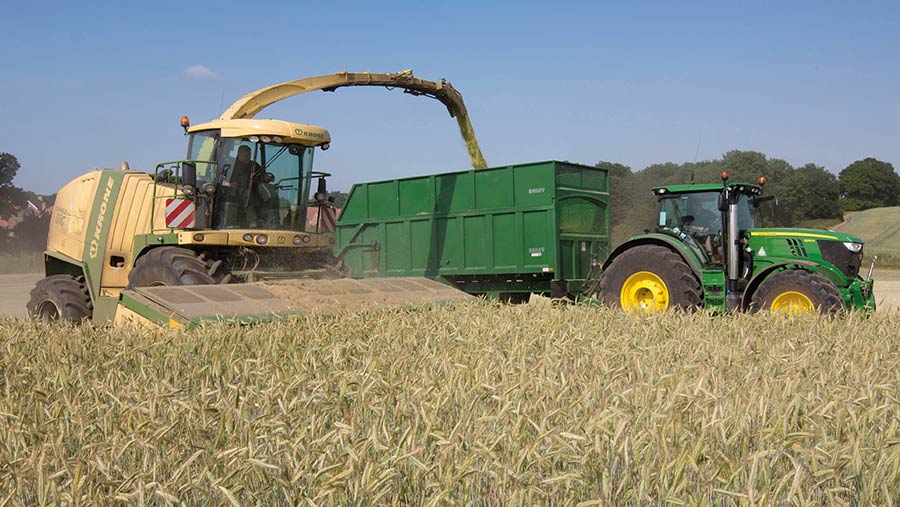
© Tim Scrivener
Its drought tolerance and low nitrogen requirements may be attractive to growers who look too cut costly fertiliser costs and improve overall rotation resilience.
“Crops destined for biogas remain the most likely option market for rye as food markets are already supplied. New variety developments have eliminated perceived problems with ergot, but lack of market options inhibits the area planted,” says Dr Cook.
Triticale
Triticale combines the hardiness of rye and grain quality of wheat to produce a low-input crop, suited to light and marginal land.
Offering high yields of grain and straw and good-quality forage, triticale is an excellent cereal feedstuff.
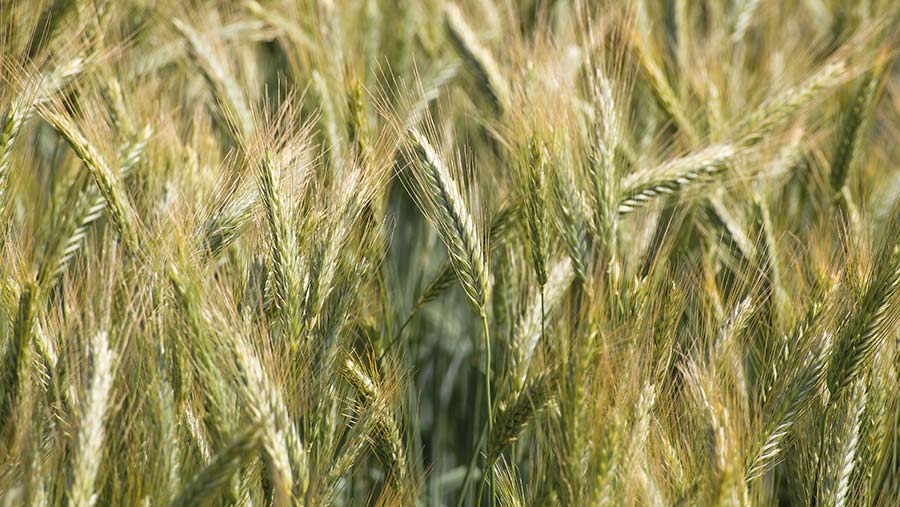
© Tim Scrivener
With high levels of protein, it has good potential as a livestock feed, suitable for both wholecrop and combining.
“Growers are enthusiastic about triticale, but end users are less so, which is why it’s mainly used as cattle feed. Yellow rust can also be an issue, but resistant varieties are available.”
Quinoa
Quinoa is a spring-sown pseudo cereal, meaning the crop is classed as a seed rather than a grain. It is relatively cheap to grow, with no pesticides approved for use. This leaves nitrogen as its main input cost and mechanical weeding as its main weed control option.
The crop can be trickier to establish than most cereals, meaning good seed-bed establishment is essential.
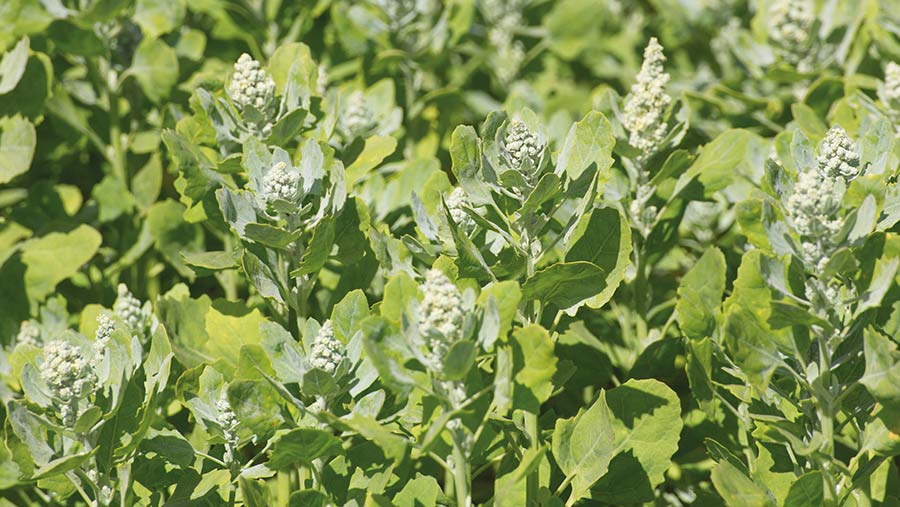
© Tim Scrivener
The British Quinoa Company is seeking new growers this spring as demand in the human consumption market grows.
With a price of £900/t and average yields of 1.5-1.75t/ha, it offers competitive gross margins compared with other spring crops and could be a viable option as growers look to widen their rotation.
Grain maize
Warmer summers and more focused variety breeding have improved opportunities for UK grain maize.
A range of forage and biogas varieties are available, but current cultivars still remain later-maturing, with an end of October harvest date.
Southern and eastern parts of England offer favourable growing conditions as grain maize requires a greater amount of Ontario heat units (OHUs) to successfully mature compared with conventional cultivars, which require a minimum of 2,500 OHUs.
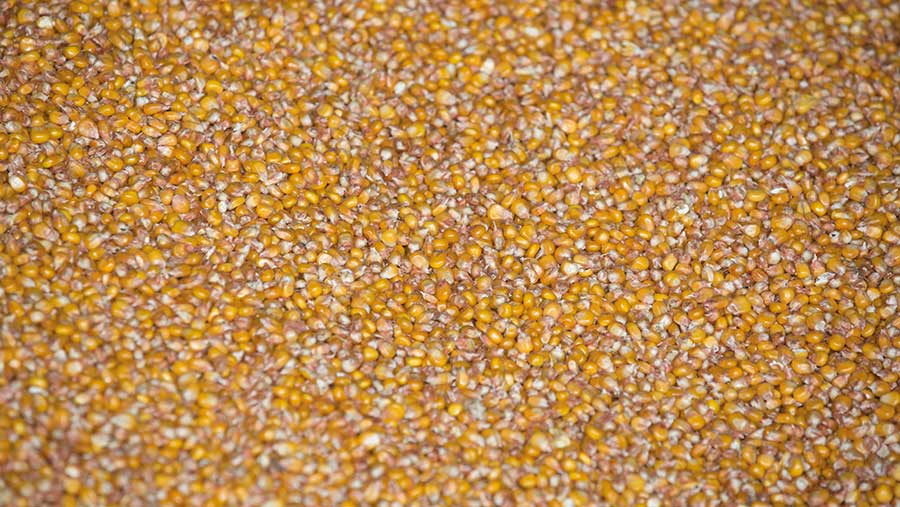
© Tim Scrivener
“When planting in the spring, soil temperatures of 8-12C are required and crops are often sensitive to compaction and subsoil pans.
“The main barrier is the huge pressure of the US market, which can easily outcompete domestic production and the need for specialist equipment at drilling and harvest. US crops are predominantly GM-grown, so there is demand for UK-grown, non-GM crops.”
Buckwheat
Often grown in a range of cover crop mixes, buckwheat can offer a profitable break crop for growers. Its high-protein, gluten-free grain is increasing in demand thanks to the human consumption market.
“It offers real potential for the UK,” says Dr Cook.
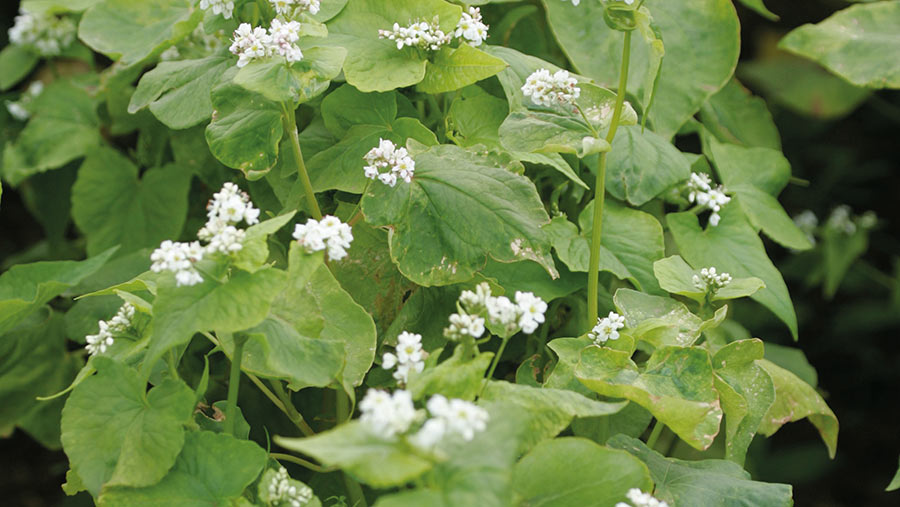
© Tim Scrivener
The crop can be grown on marginal land with low fertility and is tolerant to acidic pHs. It is sensitive to cold temperatures and is best suited to drilling in mid-May with a late harvest in October.
No specialist machinery is required for the low-input crop, but restricted breeding often limits yield.
Millet
Thousands of tonnes of millet are imported into the UK every year destined for wild birdseed mixtures.
However, UK birdseed manufacturers are now seeking a domestic supply, providing opportunities for arable farmers to diversify into this late-sown spring crop. It is also used in anaerobic digestion plants.
Like maize, millet is a C4 combinable crop, which means its alternate photosynthetic pathway makes it suited to warmer, sunnier climates and offers good drought tolerance.
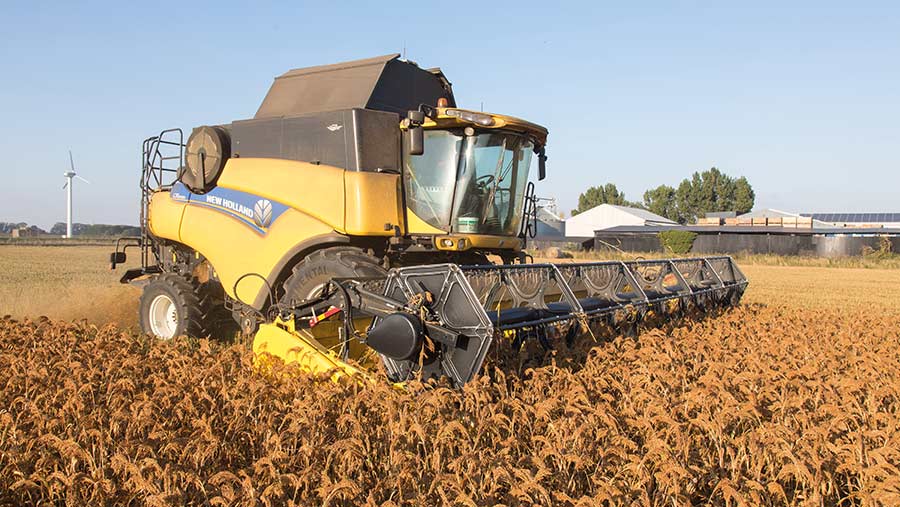
© Tim Scrivener
It is sown from late April to mid-May, into warm seed-beds with a minimum temperature of 10C.
A significant proportion of its growth takes place between June and August when temperatures are at their highest. Cold, exposed sites should be avoided.
Desiccation is required at the end of August, ahead of harvest in late September/October.
Millet grain is a similar size to rapeseed with a creamy-beige colour. Crops are easy to combine, with expected yields of 2.5-4.5t/ha.
Alternative oilseeds
Sunflowers
Sunflowers not only provide an alternative oilseed crop and use in the birdseed market, but also pave the way for a diversified income stream.
Many farmers have benefitted from initiatives such as sunflower trails or pick-your-own flowers by encouraging members of the public on farm.
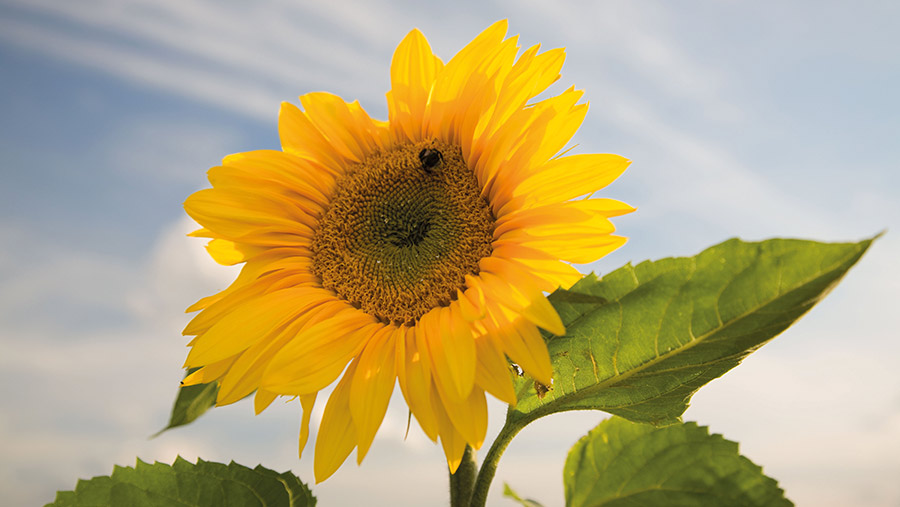
© Tim Scrivener
“Sunflowers are an excellent way to attract people on farm to generate income. They can be grown in any soil type, planted in late April/May.
“They require warm temperatures and sunshine – more precisely, 1,500 day degrees above 6C for successful growth,” says Dr Cook.
Weed control and pigeons can be problematic, although nitrogen requirements are low. Sunflowers need boron so ensure this is not limiting ahead of planting.
Linseed
Linseed is a viable oilseed alternative to oilseed rape as it does not suffer cabbage stem flea beetle attack and has significantly lower input costs.
It also improves soil health and enhances subsequent wheat yields as it is a host for mycorrhizal fungi.
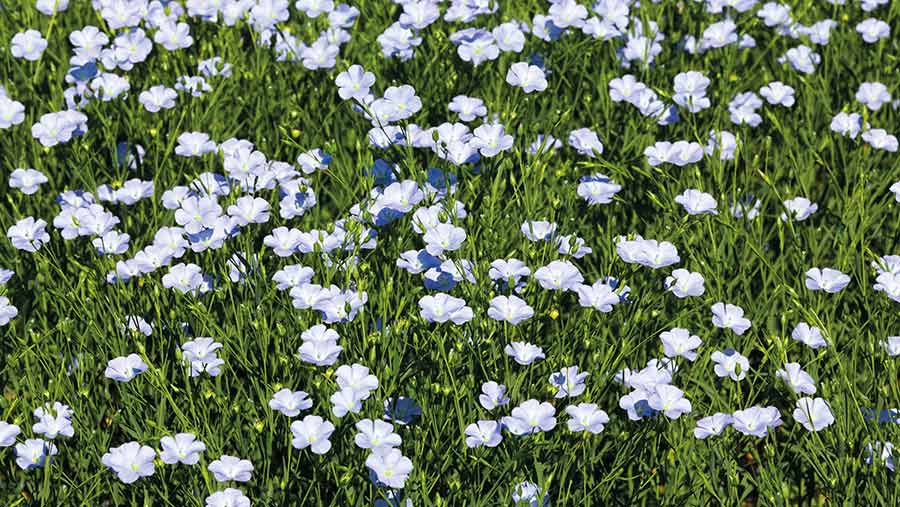
© Tim Scrivener
Both winter and spring varieties are available. It is important to avoid the canopy developing too strongly, which can otherwise risk lodging and significant yield losses.
When it comes to harvest during late August/early September, combine knives should be kept sharp to avoid cutting complications and tangling of crops.
Glyphosate desiccation is recommended ahead of harvest on a bright, sunny day with low humidity levels.
Hemp
As an oilseed that is native to the UK, hemp is easy to grow, requires few inputs and has great agronomic qualities. It also improves soil structure with its large root mass.
The market for hemp is growing as its potential end uses remain diverse. These include commercial and industrial products such as rope, clothing, shoes, food, paper, bioplastics, biofuel and insulation.
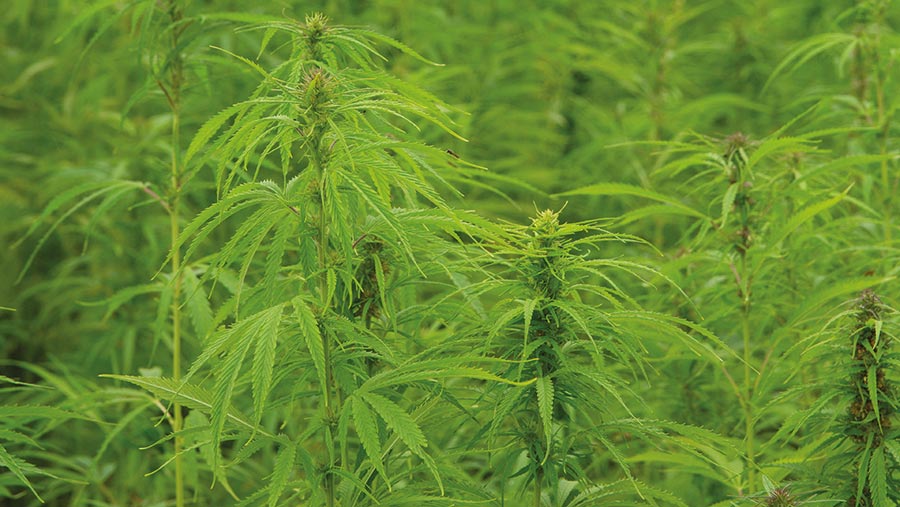
© Tim Scrivener
Its biggest barrier is the licence requirement, which must be awarded before the crop is grown. The licence costs £580 but is not awarded until April or May, which can often delay drilling.
“Restrictions are also in place on how each part of the plant is disposed. All leaf and flower matter is to be left in the field, which helps add organic matter to the soil,” adds Dr Cook.
Borage
Borage could be an attractive break crop option this spring, thanks to growing and more stable crop demand within the oilseeds market.
As a late-sown spring crop, drilling takes place from the end of April to the start of May, providing an excellent opportunity for blackgrass control.
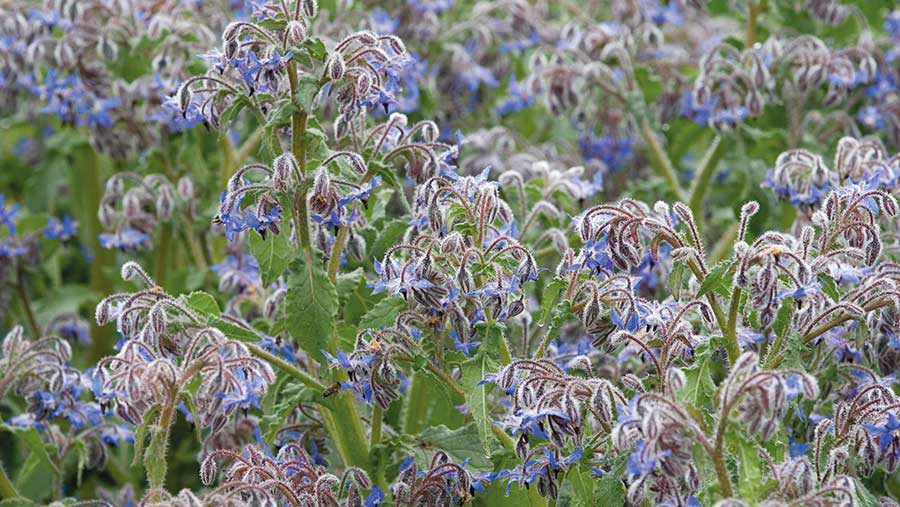
© Tim Scrivener
The crop is deep rooting and creates a good entry for direct-drilled winter wheat. Borage is a low nitrogen crop, requiring just 70kg N/ha.
It has vigorous growth, but due to its indeterminant nature, volunteers can be an issue.
A specialist swather and draper header is required to harvest the crop, which can limit those willing to grow it.
Alternative pulses
Soya
Prices for non-GM soya beans have climbed, with values now trading at £550/t.
Soya beans have an established market in the UK and there is good seed availability this season. Recent variety developments have brought beneficial traits in plant architecture, ease of harvest, maturity and adaptation to the UK climate.
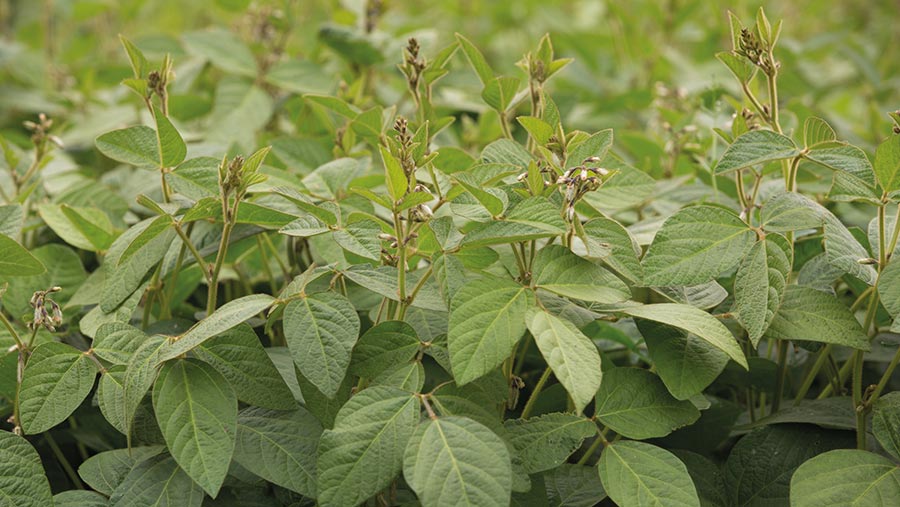
© Tim Scrivener
Other benefits include improved yields for the subsequent crop, with high nitrogen reserves and no threats of volunteers.
Although the crop suits a range of soil types, establishment can be challenging, as pigeons and rabbits are particular problem. Weeds pose little threat to soya beans but sclerotinia can be an issue.
Lupins
Better variety developments and a search for home-grown protein is boosting the popularity of this spring-sown legume.
The crop offers an excellent protein content of 32-36%, above beans at 26-28% but below soya beans at 42-44%. Gross margins stack-up well with crop values trading at £400/t. However, seed is under limited supply.
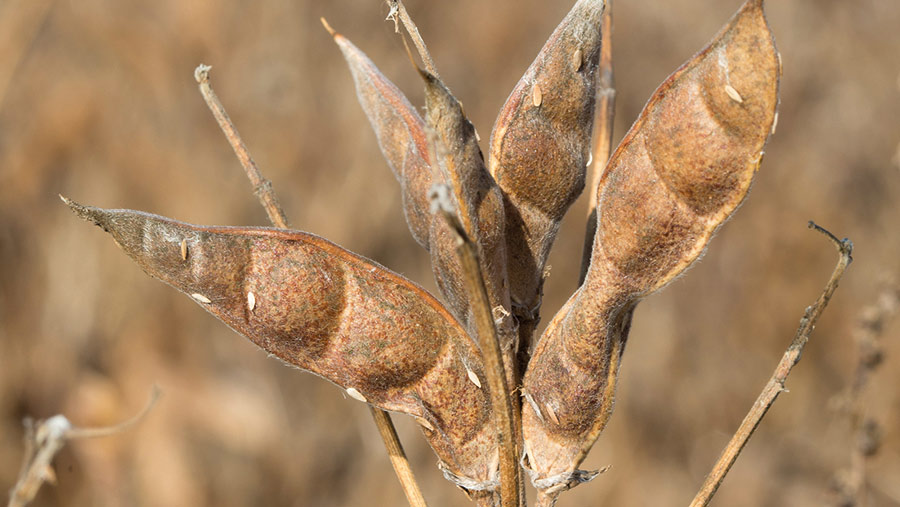
© Tim Scrivener
Flowering varieties come in blue, white and yellow – each with a preference to specific soil pH.
- Blue – pH tolerance 5-6.8 (earliest to harvest and suited to the North and West)
- White – pH tolerance 5-7.6 (highest yielding and suited to the South)
- Yellow – pH tolerance 4.6-6.8 (not commonly grown in the UK)
“All lupin species can be affected by the fungal disease anthracnose, which can be problematic. Yellow- and blue-flowered lupins tend to be the most susceptible.
“Lupins also offer harvest flexibility suited for silage, wholecrop or the combine,” says Dr Cook.

